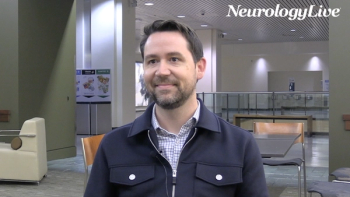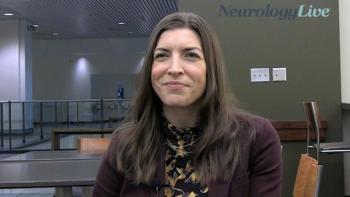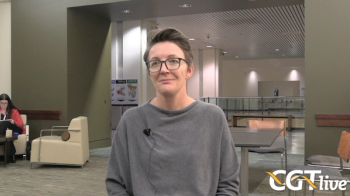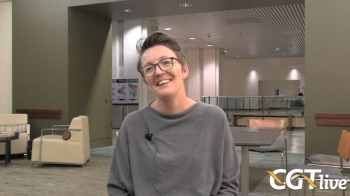
Data Roundup: September 2025 Features Updates from Huntington Disease Gene Therapy Trial, Pivotal MPS II Gene Therapy Study, and More
Catch up on any of the key data updates you may have missed last month, with coverage highlights from the CGTLive® team.
Last month, September 2025, the CGTLive® team was diligently tracking the latest data readouts and published literature on cell and gene therapies within oncology, neurology, rare diseases, and more.
As more and more innovative therapies enter the clinical trial field, more data is accrued every month, buoying excitement in the field and sometimes making or breaking the fates of small biotech companies. Last month delivered data updates from uniQure's phase 1/2 clinical trial evaluating AMT-130 for Huntington disease, REGENXBIO's pivotal phase 1/2/3 CAMPSIITE clinical trial evaluating RGX-121 for mucopolysaccharidosis type 2 (MPSII, also known as Hunter syndrome), and more. Our team has highlighted these below.
Click the read more buttons for more details and information about each update.
Phase 1/2 Trial for uniQure's Huntington Disease Gene Therapy AMT-130 Hits Primary End Point
September 25, 2025 - Findings from a phase 1/2 clinical trial evaluating uniQure's AMT-130, an adeno-associated virus (AAV) vector-based gene therapy intended to treat Huntington disease, have shown that at 36 months posttreatment, high-dose AMT-130 was able to significantly slow disease progression by 75% in comparison with a propensity score-matched external control, as assessed by the composite Unified Huntington’s Disease Rating Scale (cUHDRS; P = .003).
As such, the study has met its prespecified primary end point. Specifically, the change for the treated patients was –0.38 from baseline whereas the change for the external control was –1.52 from baseline.
The study also met a key secondary end point, as a statistically significant 60% slowing of disease progression in comparison with a propensity score-matched external control assessed at 36 months post treatment via Total Functional Capacity (TFC) was also reported (P = .033). Specifically, the change for the treated patients was –0.36 from baseline whereas the change for the external control was –0.88 from baseline.
Ultragenyx's Glycogen Storage Disease Gene Therapy DTX401 Continues to Enable Decreases in Reductions in Daily Cornstarch Intake at 96 Weeks
September 16, 2025 - Ultragenyx has reported that in the phase 3 GlucoGene clinical trial (NCT05139316), patients treated with DTX401, an investigational AAV serotype 8 (AAV8) vector-based gene therapy that is intended to treat glycogen storage disease type Ia, showed even greater reductions in daily cornstarch intake at 96 weeks post treatment compared with 48 weeks post treatment.
In comparison with previously reported 48-week data, the 96-week data showed that patients in both the ongoing DTX401 group and the group with crossover from placebo to DTX401 had greater reductions in their total daily cornstarch intake at their most recent visit compared with baseline. Specifically, the ongoing DTX401 group (n = 20) and crossover group (n = 19) together showed a 61% reduction from baseline at 96 weeks. Furthermore, patients in the DTX401 group achieved a 70% mean reduction in nighttime cornstarch intake and patients in the crossover group achieved a 75% mean reduction in nighttime cornstarch intake. Ultragenyx highlighted that across both these groups, 2 of 3 patients were able to completely eliminate 1 or more nighttime cornstarch doses in the posttreatment period.
The company also noted that during the study’s second year, hypoglycemia stayed at low levels in the treated patients. In addition, levels in the euglycemic range (70-120 mg/dL) were improved. In a controlled fasting challenge, protection from severe hypoglycemia (< 54 mg/dL) was also observed in treated patients through the study’s second year.
Some Patients Treated in Anixa's Ovarian Cancer CER T Trial Show Longer-Than-Expected Survival
September 11, 2025 - Anixa Biosciences stated that some patients treated in the phase 1 clinical trial (NCT05316129) evaluating its novel follicle-stimulating hormone receptor–targeting chimeric antigen receptor (CAR)/chimeric endocrine receptor (CER) T-cell therapy for the treatment of ovarian cancer have shown survival times that exceed disease-specific median survival benchmarks.
The company specifically highlighted that one patient who was treated in the trial’s first cohort is still alive at 28 months after being dosed. However, Anixa clarified that these data are preliminary and from a small group of total patients.
Alongside this, the company noted that it has completed dosing in the fourth cohort of the trial, which is being carried out in collaboration with Moffitt Cancer Center. Patients in the fourth cohort were treated at a dose of 3 × 106 CAR-positive cells per kilogram of body weight. This dose level constitutes an approximately 30-fold jump from the dose received by patients in the first cohort, which was 1 × 105 cells/kg. As of yet, there have been no dose-limiting toxicities reported in the fourth cohort. Dosing in the fifth cohort, which will commence pending a safety review of the fourth cohort, will go forward with approximately 1 × 107 cells/kg.
Patients Treated With REGENXBIO's MPS II Gene Therapy RGX-121 Sustain 82% Median Reduction in CSF HS D2S6 Levels Through 1 Year
September 10, 2025 - According to a new data update from REGENXBIO's pivotal phase 1/2/3 CAMPSIITE clinical trial (NCT03566043) evaluating clemidsogene lanparvovec (RGX-121), an investigational AAV vector-based gene therapy for mucopolysaccharidosis type 2 (MPSII, also known as Hunter syndrome), 13 patients treated in the pivotal phase have shown an 82% reduction in heparan sulfate (HS) D2S6 levels in the cerebrospinal fluid (CSF) through 1 year posttreatment. The company originally reported the updated data at the International Congress of Inborn Errors of Metabolism (ICIEM), held in Kyoto, Japan, from September 2 to 6, 2025, and subsequently summarized key points in a press release.
According to the press release, HS D2S6 is “a key biomarker of MPS II brain disease that is reasonably likely to predict clinical benefit.” The company also noted that the updated data is in line with earlier findings: the study previously met its primary end point for the proportion of treated patients showing CSF HS D2S6 under maximum attenuated levels at 16 weeks posttreatment (P < .0001). In addition, REGENXBIO pointed out that in the dose-finding part of the trial, an 85% decrease in CSF HS D2S6 was maintained through 2 years posttreatment for patients who received the pivotal dose. Furthermore, in the pivotal and dose-finding parts of CAMPSIITE, positive neurodevelopmental outcomes were seen, with neurodevelopmental skill acquisition or stability on all sub-scales of the Bayley Scales of Infant and Toddler Development, 3rd Edition (BSID-III) being seen in patients treated in the pivotal portion at 1 year posttreatment. REGENXBIO states that strong correlation is seen between levels of CSF HS D2S6 at 16 weeks posttreatment and neurocognitive outcomes at 1 year posttreatment, according to new data from both the dose-finding and pivotal parts of the trial, thus supporting the utilization of CSF HS D2S6 as a surrogate end point for the accelerated approval pathway that the company is pursuing for the gene therapy product.
"These positive biomarker and functional data provide further evidence of the long-term potential of RGX-121 to change the trajectory of Hunter syndrome for boys with this devastating, degenerative disease," Steve Pakola, MD, the chief medical officer of REGENXBIO, said in a statement. "The sustained reductions in CSF HS D2S6 and evidence of the strong correlation between biomarker level and neurodevelopmental improvement are highly encouraging as we look toward potential accelerated approval early next year."
Patients With DMD Treated With Avidity Biosciences’ Antibody-Oligonucleotide Conjugate Del-Zota Show Functional Improvements
September 10, 2025 - Patients with Duchenne muscular dystrophy (DMD) treated with Avidity Biosciences' antibody-oligonucleotide conjugate delpacibart zotadirsen (also known as del-zota), which consists of an anti–transferrin receptor 1 (TfR1) antibody conjugated to an exon 44–skipping phosphorodiamidate-morpholino conjugate (PMO), have shown functional improvements.
The findings come from patients with DMD with exon 44 skipping (DMD44) treated in the phase 1/2 EXPLORE44 clinical trial (NCT05670730) and the phase 2 EXPLORE44OLE trial (NCT06244082). The group includes 12 ambulatory and 5 nonambulatory patients who have at least 1 year of follow-up. Results were compared with baseline and natural history data.
On the Performance of Upper Limb 2.0 (PUL2) test, patients treated with del-zota (n = 17) showed a 1.5-point improvement from baseline whereas natural history patients (n = 27) showed a 0.7-point decline from baseline. Avidity noted that for the patients treated with del-zota, similar improvements on PUL2 were seen for ambulatory and nonambulatory patients.
Newsletter
Stay at the forefront of cutting-edge science with CGT—your direct line to expert insights, breakthrough data, and real-time coverage of the latest advancements in cell and gene therapy.










































